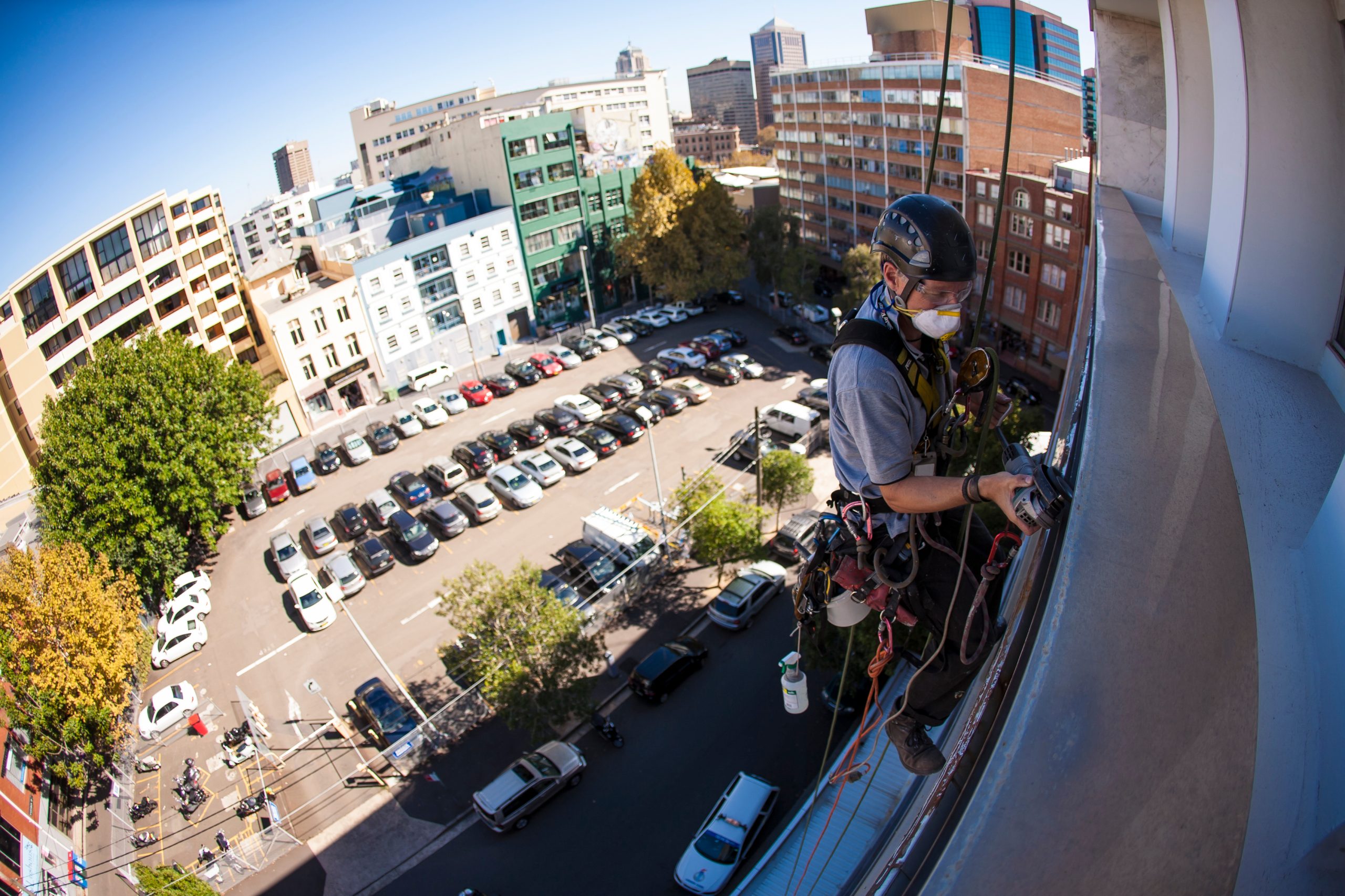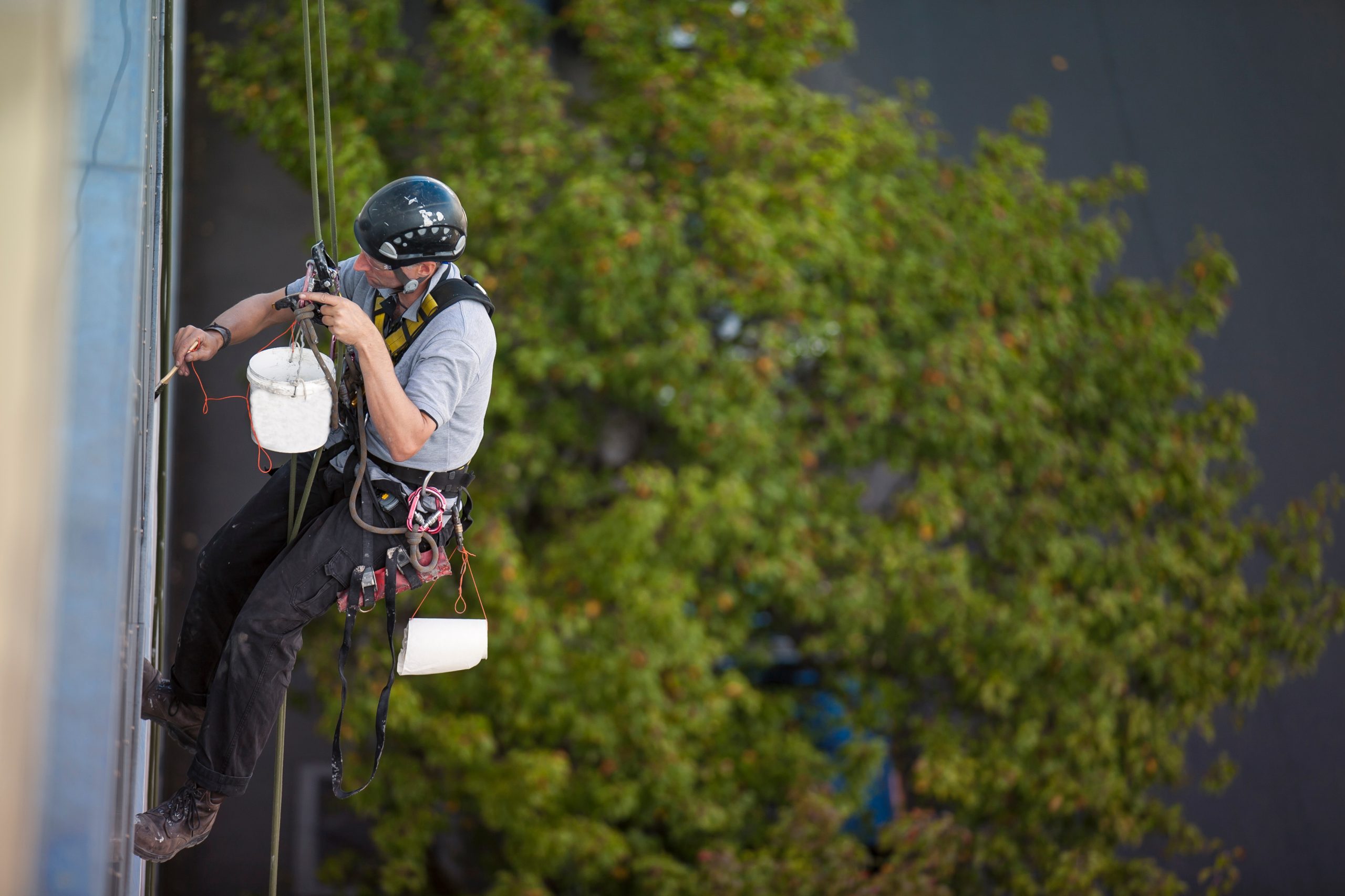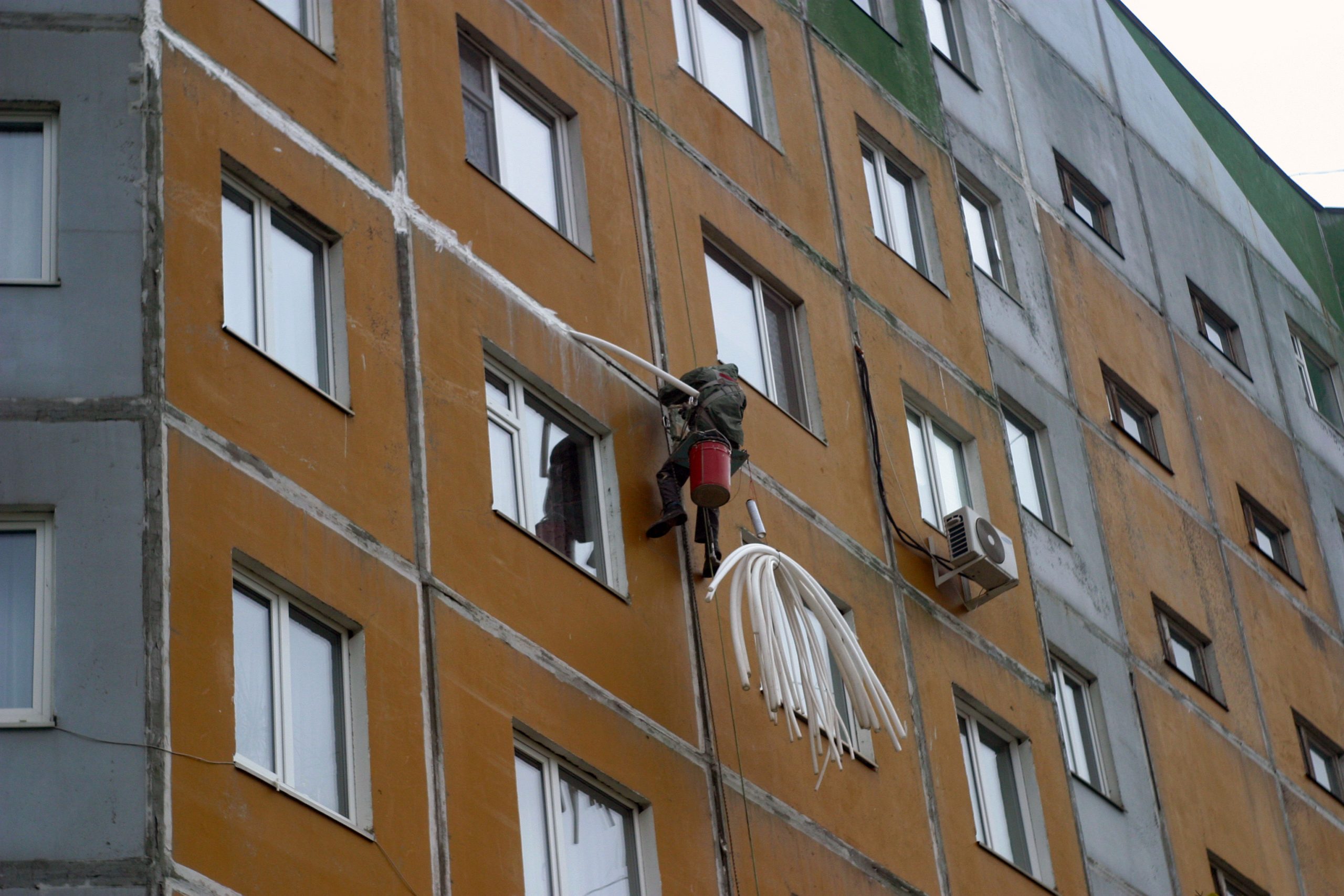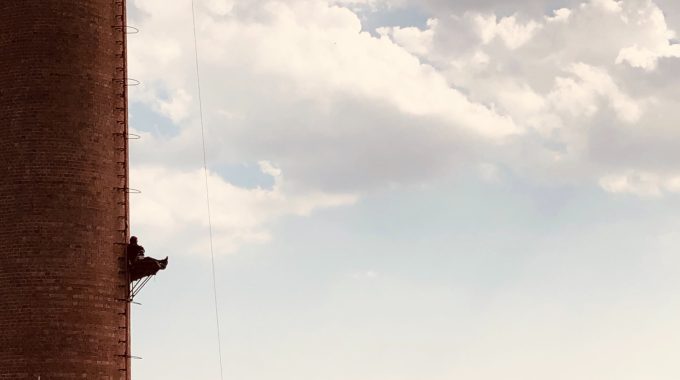Rope access is considered one of the most effective methods of performing a wide variety of jobs, from building maintenance to railroad bridge inspections. However, since this is a highly skilled trade with potential risks, it is necessary for us to use certain techniques to ensure that the work is done safely and that all tasks are completed to the highest standard. So, without further ado, let’s dive into this blog and learn what you need to know about the five most important techniques we use when performing rope work.
What is rope access?

The primary purpose of rope access work is to provide workers with access to hard-to-reach places without scaffolding, gondolas, or aerial platforms. A rope access worker uses ropes to descend, ascend or cross ropes while held in place by a harness and sometimes a work seat. Rope access was first used in industrial work in the 1980s.
Since then, trade associations such as IRATA (Industrial Rope Access Trade Association) and SPRAT (Society of Professional Rope Access Technicians) have codified the technique and made it a proven and reliable method for allowing people to access hard-to-reach places to perform work. Today, a wide range of work and occupations require rope access. For example, the most common uses in the civil sector are cleaning windows, maintenance work, and assistance.
To meet the safety requirements for rope access, rope access workers typically use several redundancies to ensure they are still safe if one piece of equipment fails. In the industrial sectors, the most common uses are non-destructive testing (also known as inspections). Two common redundancies are as follows:
-
- A fall arrest system uses two ropes to provide safety redundancy- a work rope and a safety rope.
-
- Additional anchor points- one main anchor point+two emergency anchor points.
The main advantage of using access ropes is the speed and safety with which workers can reach hard-to-reach places to do their jobs, often with minimal impact on other work operations and surrounding areas. When comparing the man-hours at risk and the risks and costs associated with accessing these locations to other access options, rope access generally reduces the time workers are exposed to risk and the extent of that risk.
1. Make sure your harness is always secured at two points.
There are two main reasons for this: Safety and accuracy. If you stay attached at two points, the likelihood of a hazard is much lower, and you can move more directly. At Edge Access, safety is very important to them- their employees are an essential part of their business.
2. Fall Protection

This technique is only used when necessary. It is necessary when there is some degree of free fall – fall protection ensures that this is kept to a minimum. This is usually done by controlling the safety equipment used by one of our employees, such as wearing a helmet at all times and using a safety harness in certain areas. This allows them to remain upright.
3. Rope climbing and descending
Rope climbing and descending are necessary skills for anyone wishing to work in the rope access field, although the techniques for doing so are often updated. Learning these two techniques is of immeasurable importance in the industry. Learning rope climbing is taught early in training, and, as Newton said, what goes up must also come down.
4. Knot tying

For obvious reasons, this is an essential element of rope access. It is taught early on to those who want to work in rope access, as they must pass the first step of the IRATA certification program. There are an incredible number of different knots that our employees must and do master to work on your buildings at the highest level successfully. As the rope access industry evolves, more and more different types of knots appear on the market- we make sure our people stay current with the latest techniques.
5. Anchoring systems
This technique is not always used, but it is occasionally used for work on roofs or confined spaces. This technique is also used mainly for safety reasons – the risk of workers falling is much lower with this system. In the event of a fall, the fall distance would be considerably reduced, so safety is guaranteed throughout the work.
Looking for help?

Edge Access provides rope access services in difficult-to-reach locations in Melbourne. We have a team of highly experienced rope-access technicians that has the skills to perform work suspended in vertical environments. They can perform different types of work at height in various situations, including painting, lead detection, facade auditing, and more.
As professionals in the field, we have a safety-first approach policy for all projects we are about to embark upon. We can easily access high-altitude locations using rope and the appropriate safety gear. So, what are you waiting for? Visit their website or give them a call for more information.


Pingback: Top 4 Things To Know About Brandjacking | Golocal business
Pingback: Top 5 Things To Know About Facade Renovation | Golocal business